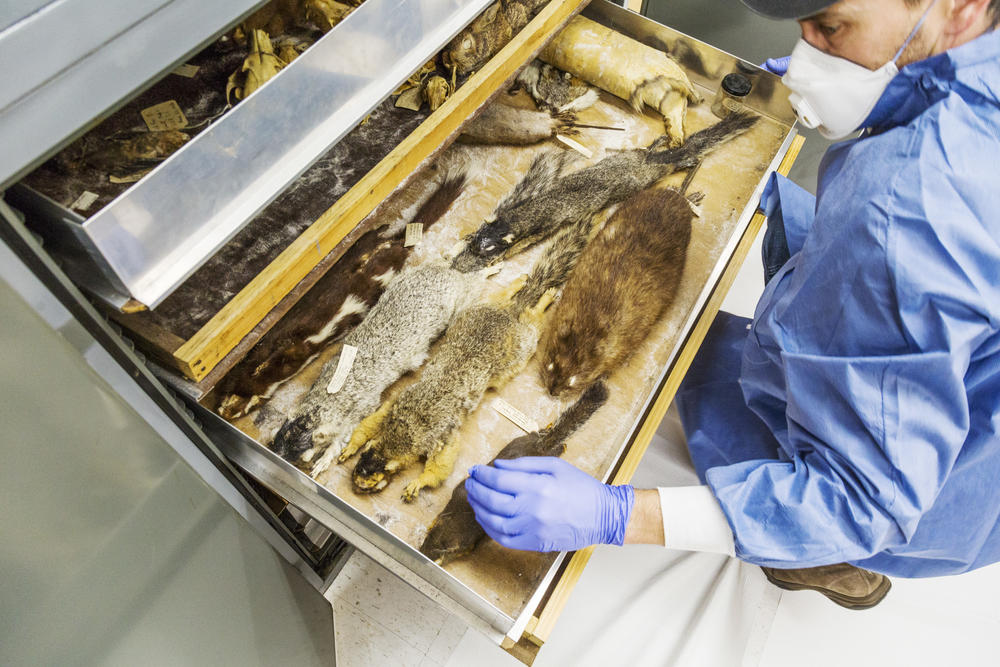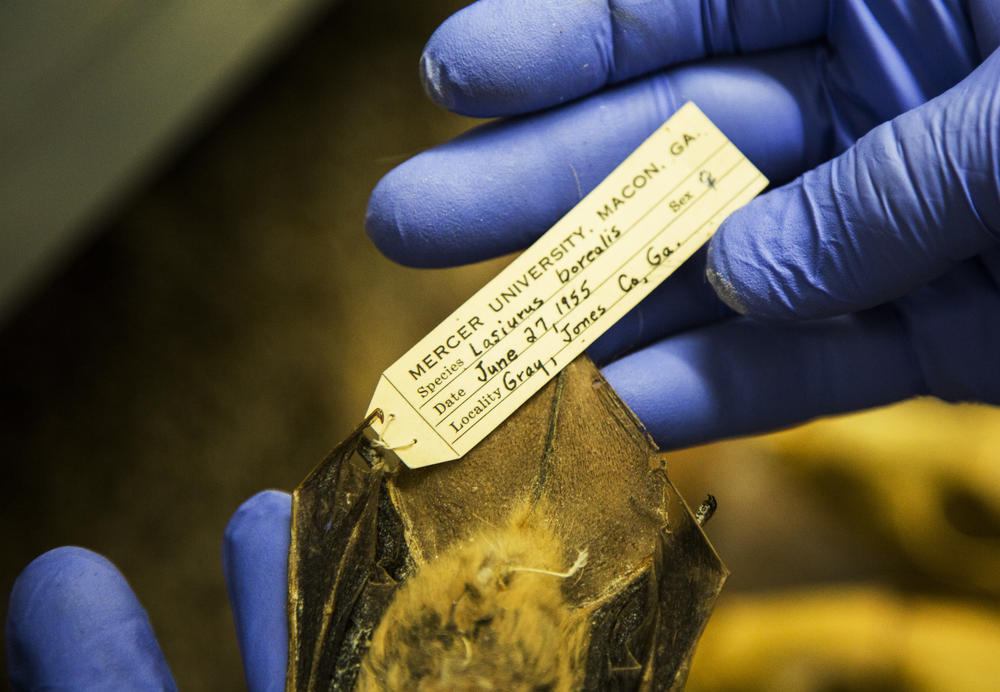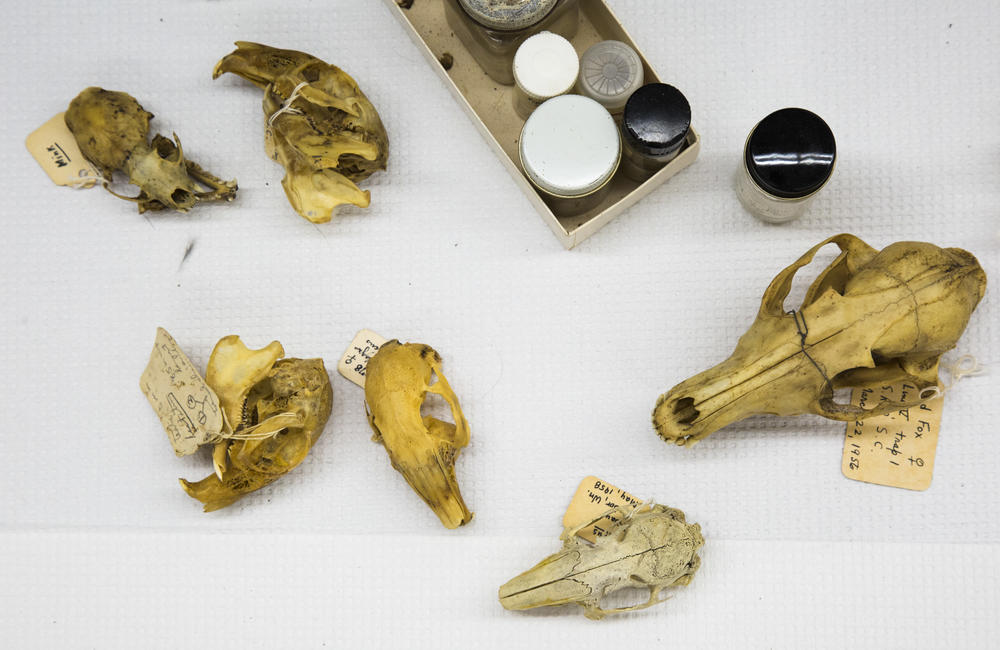Section Branding
Header Content
Dead Animals In Drawers? It's Not Hoarding, It's Science
Primary Content
Dead Animals In Drawers? It's Not Hoarding, It's Science
The things you find in drawers when you move.
Old credit cards. Single socks. Concert tickets. Phone chargers. Two foot long dead squirrels.
Well, maybe not the squirrels. Unless you’re a scientist moving to a new lab that is. Biologists save all kinds stuff to look at later. Take the science department at Mercer University in Macon for instance.
Last year biologist Craig Byron was packing up to help move the department into a brand new building with state of the art genetics labs, technology in the lecture halls, the works. Then he found a big, blue, and forgotten, metal cabinet.
It was stuffed with animals.
“I mean here's a possum skull,” Byron said while picking through the contents one day before the move. “You can tell because it's got a tiny little brain compared to a similarly sized probably a raccoon or something.”
It didn’t stop there.
“Here's a red fox….You can see some bats here,” he said. “Lynx rufus. Are there Lynx out there anymore?”
All the animals were trapped, killed, and preserved, spread out like an imitation of Superman in order to store flat in drawers, all in the name of science. Eventually Byron got to a layer of fox squirrels.
“I've never seen a fox squirrel in Bibb County,” he said.
Macon is in Bibb County. The date of the squirrel’s death and collection was handwritten on a little tag attached by string. November 20th, 1958.
At twice the size of gray squirrels, fox squirrels need special habitat. That’s mature stands of long leaf pine forest. There’s none of that in Bibb County today, but this squirrel told us there once was, specifically on November 20th, 1958.
As cool as that was, the collection couldn’t stay. The birds in the cabinet would go to Lousiana State University. What about the mammals?
“Somebody in D.C. wants them,” Craig Byron said.
That somebody was Suzanne Peurach at the Biological Survey unit, part of the US Geological Survey. It’s the largest animal research collection in the world, 600,000 specimens total, housed at the Smithsonian. And yes, Peurach said they have things preserved in jars. Big jars.
“Including zebras and gorillas and pygmy hippos from the zoo,” she said.
Peurach curates the 300,000 plus North American specimens. Researchers ask to see them for all kinds of reasons.
“The point of these collections is we don't know what they're going to be used for,” Peurach said.
For example, take what happened when Peurach was a college student at the University of New Mexico in the 1990s.
“People were dying from a mystery illness and they thought it might be related to mammals,” Peurach remembered.
This was in the Four Corners area. Peurach and her mentor Terry Yates got a message to come back in from field work as fast as possible.
Investigators from the Centers for Disease Control came to look for clues in Yates’ collection of preserved deer mice which they knew carried deadly hantavirus. When they looked at tissue from years and years worth of mice, researchers saw hantavirus outbreaks occurring at regular intervals. Now they had a window to the next outbreak. Peurach was stunned.
“And then all of a sudden it was like a lightning bolt hit me,” she said.
Those mice in drawers? They could save lives.
Federal budget talk heated up after I spoke to Peurach. Some science programs were cut in the new Federal spending bill, but the six person Biological Survey unit isn’t even named in the legislation, either as something cut or funded. For now Peurach can’t take new specimens.
That’s why the animals Craig Byron found at Mercer University have only moved across the street from where he found them. Today they are in the basement of the brand new science building, on a pallet of about five cardboard boxes, packed up and ready to ship.
“But they're still just kind of in limbo,” Byron said.
We don’t know yet what questions the Georgia bats, muskrats, and fox squirrels can answer. We might not be able to ask until they find a good home.




